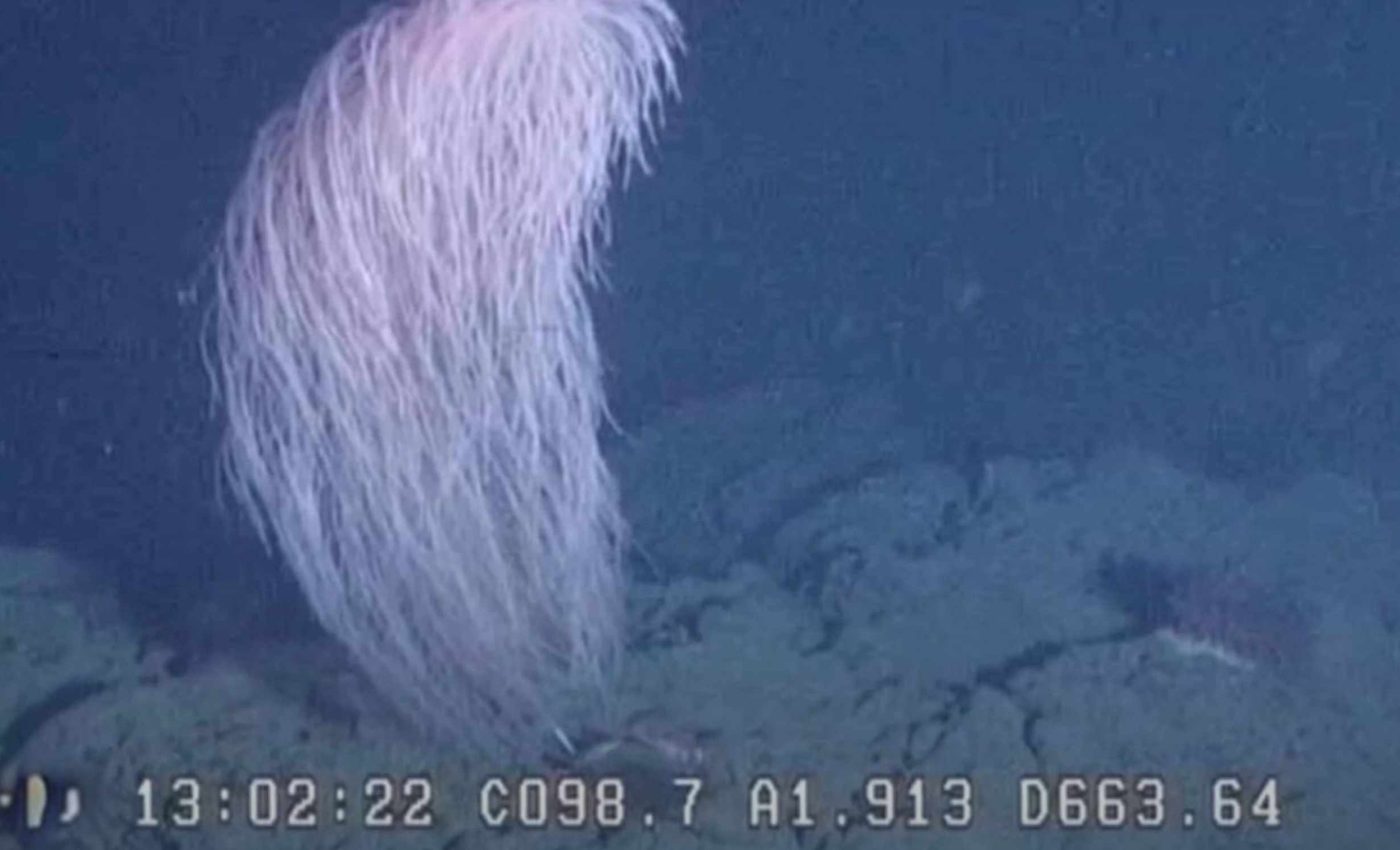
Scientists discover an amazing new creature at the bottom of the ocean
A new deep-sea coral species from the tropical western Pacific has a name that makes people smile – Iridogorgia chewbacca.
The colony stands alone on rocky bottoms, with a shining stem and long branches that look a bit like flowing hair.
Researchers first noticed the coral species off Molokai in 2006, then saw it near the Mariana Trench in 2016.
The Molokai colony measured about 4 feet (1.2 meters) tall, the Mariana sample reached roughly 20 inches (50 centimeters), and the branches grow up to 15 inches (38 centimeters) long.
Finding Chewbacca coral
The work features Les Watling of the University of Hawaii at Manoa (UHM), a longtime deep-sea coral expert. His university profile shows decades of taxonomic and exploratory research in these waters.
The team formally described Iridogorgia chewbacca together with a sister species, Iridogorgia curva.
In a peer-reviewed study, the authors report that the genus Iridogorgia now includes 14 species, with 10 recorded in the tropical western Pacific.
The paper also noted that a common field characteristic, the direction in which the spiral grows, does not reliably separate species. Genetic evidence helped sort species boundaries where lookalikes made things tricky.
Details of the new coral species
Iridogorgia belongs to the gorgonian group, a set of branching corals that grow as fans, whips, or trees.
These animals are part of the octocoral class that includes soft corals with eightfold symmetry and tiny skeletal elements called sclerites.
Each colony is built from thousands of tiny polyps that share tissues and resources. The polyps extend their tentacles to feed when currents deliver particles, then tuck them back inside when conditions shift.
Iridogorgia species often show a gleaming, iridescent surface and a graceful spiral axis. Those details are not just pretty, they help scientists tell close relatives apart.
How scientists knew it was new
The team used a mix of body form and DNA. They examined branch shape, the length and flexibility of branchlets, and the structure of the stem and sclerites in a careful, side-by-side comparison.
They also sequenced nuclear and mitochondrial markers to test species lines.
The study reported that 28S rDNA showed more variation among Iridogorgia species than the widely used mitochondrial markers mtMutS and mtMutS cox1.
That result matters because some deep-sea coral species change slowly at mitochondrial genes. Nuclear regions like 28S rDNA can offer the fine-scale signal that mitochondrial genes like mtMutS lack.
The combined approach gave a clean case for the new name and clarified which previously reported samples belong to which coral species. It also raised the count of Iridogorgia species known from the Pacific.
Where explorers spotted the coral species
Remotely operated vehicle work in the Mariana Archipelago region captured footage and specimens during a 2016 campaign.
NOAA’s Okeanos Explorer completed a series of ROV expeditions in the area that year, mapping and imaging deep habitats across the Marine National Monument and nearby slopes.
Those dives documented many solitary coral colonies on hard rock, including Iridogorgia species.
NOAA’s public archive includes Iridogorgia photographs from the 2016 Deepwater Exploration of the Marianas that confirm the look and growth habit of these coral species in place.
The chewbacca coral itself remains uncommon and widely spaced. That pattern fits what scientists see for many deep-sea coral species that depend on strong currents and clean, hard substrate on which to settle.
Why this discovery changes the picture
The western tropical Pacific holds far more Iridogorgia species than scientists expected. According to the study, ten of the fourteen known species occur in this region, which suggests this is a center of diversity.
This concentration helps biologists ask sharper questions about how currents, seamount chains, and depth zones shape where species live. It also hints that more species may be waiting in areas that remain poorly sampled.
The find underscores how essential careful taxonomy is for conservation. Management depends on knowing what lives where and how unique each population is.
Chewbacca coral and nostalgia
Names help people remember a species. They also mark a story about how the first observers reacted.
“Its long, flexible branches and shape immediately reminded me of Chewbacca,” said Watling. That reaction captures the coral’s look and the joy of seeing something new in a place that still surprises experts.
Taxonomic names follow strict rules, so the formal species name Iridogorgia chewbacca sits alongside a plain English nickname. Both will likely help students and stakeholders keep track of the species in future work.
Future surveys will test whether I. chewbacca appears across a broader swath of Pacific slopes or remains limited to a few sites. Imaging and sampling at different depths will help map its true range.
Genetic tools will also keep improving. Researchers will likely pair markers like 28S rDNA with whole genome surveys to tighten species limits where morphology alone falls short.
Ocean policy will benefit from the clarity that follows. As deep-sea uses grow, good maps of sensitive coral habitats can guide smart choices that reduce harm.
The study is published in Zootaxa.
—–
Like what you read? Subscribe to our newsletter for engaging articles, exclusive content, and the latest updates.
Check us out on EarthSnap, a free app brought to you by Eric Ralls and Earth.com.
—–













